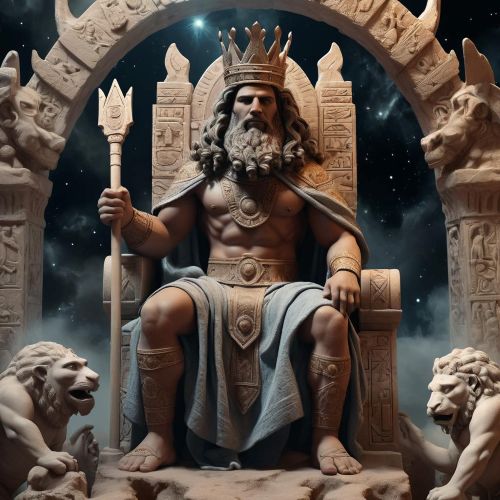Hurrian Mythology
Hurrian mythology stands as one of the most influential yet often overlooked spiritual traditions of the ancient Near East. Flourishing in the highlands of Anatolia and northern Mesopotamia during the 3rd and 2nd millennia BCE, the Hurrians left a profound mark on neighboring civilizations — particularly the Hittites, Assyrians, and later Greek cultures. Their myths reveal a complex pantheon of gods and goddesses who embodied natural forces, cosmic order, and the eternal cycles of life and power. Though much of what is known of Hurrian mythology comes through Hittite and Ugaritic texts, its poetic depth and symbolic resonance have helped scholars reconstruct one of the great spiritual systems of the ancient world.
At the heart of Hurrian mythology lies the supreme storm god Teshub, ruler of heaven and earth, who governs thunder, wind, and fertility. He is often depicted wielding lightning bolts and riding bulls — symbols of strength and divine authority. Teshub’s power is both nurturing and destructive, reflecting the dual nature of the storm as bringer of rain and agent of chaos. His consort, the goddess Hepat (or Hebat), stands as queen of the gods, radiant and maternal, embodying the sustaining force of the cosmos. Their divine son, Sharruma, is often shown as a protective deity, guiding kings and warriors. Together, they represent a celestial family through which the Hurrians expressed the balance of power, love, and protection that governed the natural and spiritual worlds.
One of the most important and influential narratives in Hurrian mythology is the Song of Kumarbi, a mythic epic that tells of divine succession and cosmic renewal. In this story, the god Kumarbi overthrows his father Anu, the sky god, by biting off his genitals — an act that allows him to seize divine power but also causes him to give birth to Teshub, the future storm god. Teshub then rises to challenge Kumarbi, reclaiming the heavens and restoring balance to the universe. This myth, filled with vivid imagery and symbolism, captures the Hurrian view of power as cyclical — that destruction and creation, rebellion and order, are all part of the divine process. Scholars often see parallels between this story and later Greek myths of Uranus, Cronus, and Zeus, suggesting that Hurrian ideas helped shape the mythic imagination of the ancient Mediterranean world.
The Hurrians also revered numerous deities tied to natural and moral forces: Shaushka, a goddess of love and war associated with healing and transformation; Kumarbi, the dark and fertile god of the underworld; and Ea (or Enki), the god of wisdom and magic, who guided both gods and humans through knowledge and ritual. Hurrian religious life was centered around temple worship, hymns, and rituals that sought to maintain divine order and harmony. Their festivals reenacted cosmic myths through prayer, dance, and offerings, ensuring that the gods’ favor continued to bless the earth with fertility and peace.
Hurrian mythology remains one of the cornerstones of ancient Anatolian spirituality — a bridge between the Mesopotamian and Indo-European worlds. It reflects a people who understood the divine not as distant but as a living force within storm, soil, and spirit. Through the voices of Teshub, Hepat, and Kumarbi, the Hurrians left behind a legacy of myth that still echoes through the winds of time — the thunder that speaks of creation, destruction, and the endless rhythm of renewal.



